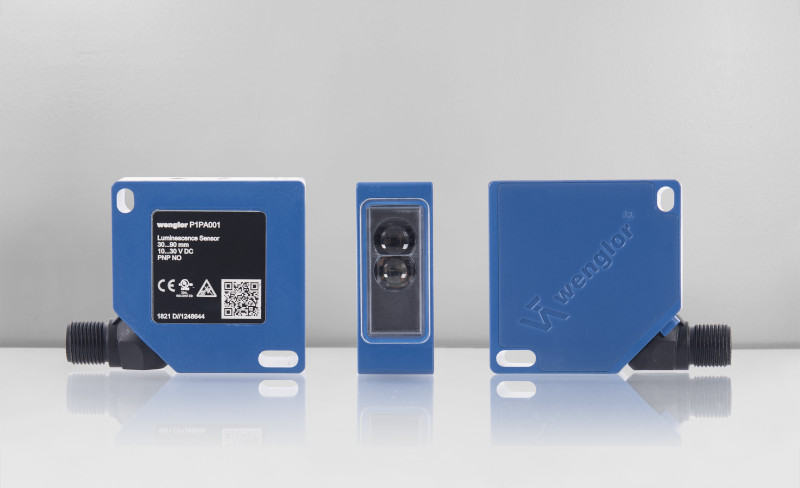New Generation, New Features: wenglor’s photoelectronic luminescence sensors combine innovative features and proven performance values for reliable detection of luminophors. In addition to an IO-Link interface, the two new models P1PA001 and P1PA002 also have a teach-in button for intuitive configuration.
The world speaks IO-Link – and wenglor’s luminescence sensors are no exception. The standardized communication interface makes it easy to configure parameters, output intensity values, operate condition monitoring or set on and off delays. Simply via IO-Link. But the sensor housing has also been given a functional facelift: A central teach-in button and two LEDs on the top of the sensor ensure a simple operating concept. If the button is held down for two or five seconds, objects can be taught in statically or dynamically. To teach in the sensor remotely, you can use the intuitive wTeach2 configuration software. “This makes the entire installation, configuration and maintenance easier”, says wenglor product manager Stefan Reetz. “There are fewer elements on the sensor than before, and they can do more.
Everything else can be conveniently adjusted via IO-Link 1.1.” The technology is housed in wenglor’s tried-and-tested 1P housing (50 × 50 × 20 mm). An extended working range of between 30 and 90 mm and a small light spot diameter, combined with a high switching frequency of 2,500 Hz ensure an enormous performance range. Receiving ranges between 420 and 750 nm (P1PA001) and 570 and 750 nm (P1PA002) round off the new generation.
Making the Invisible Visible
Luminescence sensors emit UV light at a certain wavelength. If the emitted light strikes a luminescent object, it reflects within a visible wavelength range in accordance with the luminescent substance mounted. The sensors use this effect to make markings on labels visible, for example. Your advantage: These markings remain invisible to the human eye. Particularly when packaging pharmaceutical products or food products, labels must be scanned in this way. However, these special sensors are also used for glue testing or the detection of invisible markings in the wood industry.
The Highlights at a Glance
- Easy configuration via teach-in button, wTeach2 software or via IO-Link
- Compact 1P format (50 × 50 × 20 mm)
- Interface: IO-Link 1.1
- Connection type M12 × 1, 5-pin
- Wide working range from 30 to 90 mm
- Small light spot diameter of 5 mm
- High switching frequency of 2,500 Hz

